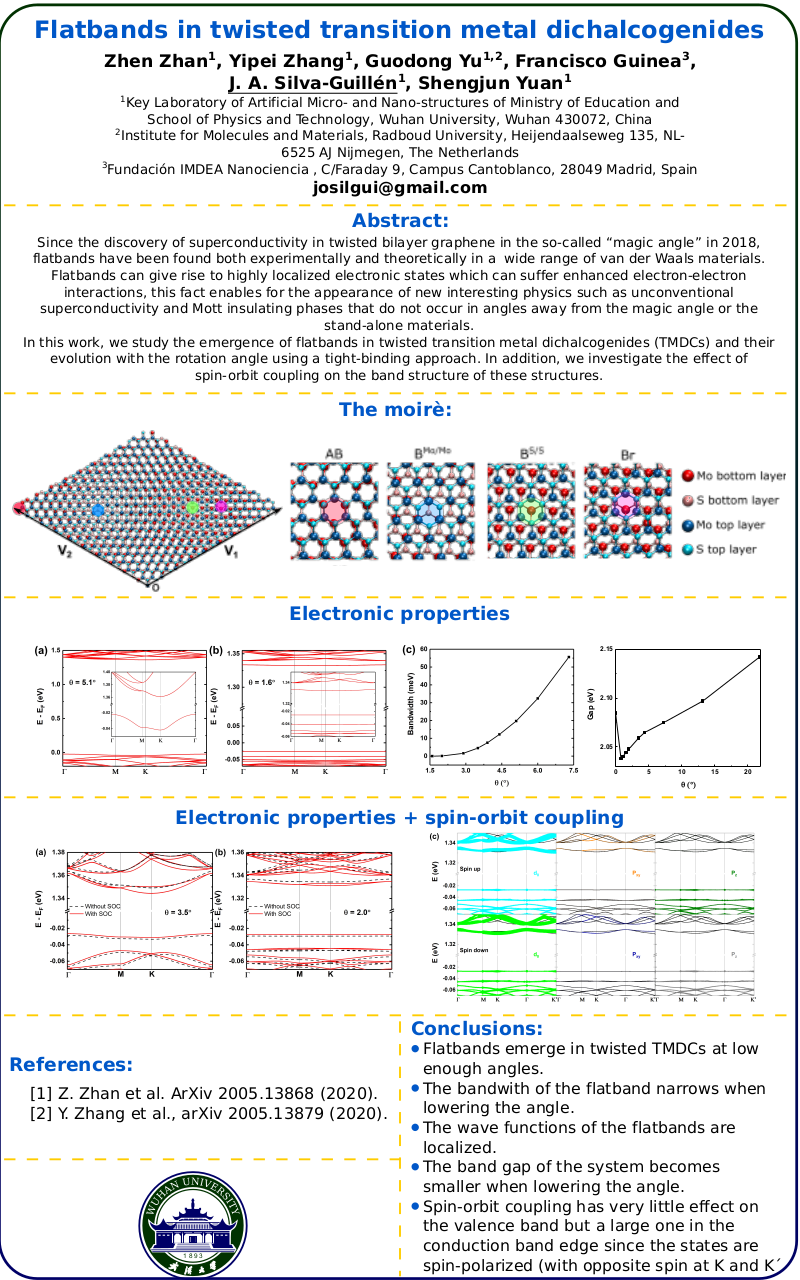Flat bands in twisted transition metal dichalcogenides
ABSTRACT
Since the discovery of superconductivity in twisted bilayer graphene in the so-called “magic angle” in 201, flatbands have been found both experimentally and theoretically in a wide range of van der Waals materials. Flatbands can give rise to highly localized electronic states which can suffer enhanced electron-electron interactions, this fact enables for the appearance of new interesting physics such as unconventional superconductivity and Mott insulating phases that do not occur in angles away from the magic angle or the stand-alone materials. In this work, we study the emergence of flatbands in twisted transition metal dichalcogenides (TMDCs) and their evolution with the rotation angle using a tight-binding approach. In addition, we investigate the effect of spin-orbit coupling in the band structure of these structures. Moreover, we examine the evolution of the electronic properties with the application of an electric field to the system. We find that, unlike in twisted bilayer graphene, flatbands appear in TMDCs for almost any small twist angles. The width of flatbands becomes smaller and their wave function becomes more localized when the rotation angle decreases. Interestingly, pressure and local deformation can tune the width of the flatbands, as well as their localization. Actually, when looking at local density of states we find that the band gap varies locally along the moirè pattern due to the change in the coupling between layers at different sites. Furthermore, the inclusion of spin-orbit interaction shows that there is spin/orbital/valley locking at the minimum of the conduction band at the K point of the Brillouin zone.
PRESENTER
Jose Angel Silva-Guillén
Wuhan University


Leave a Reply
Want to join the discussion?Feel free to contribute!